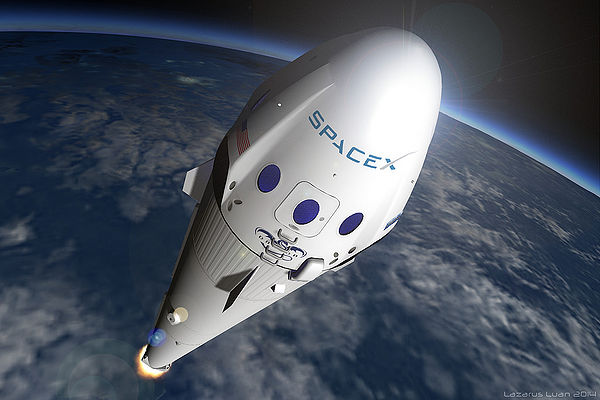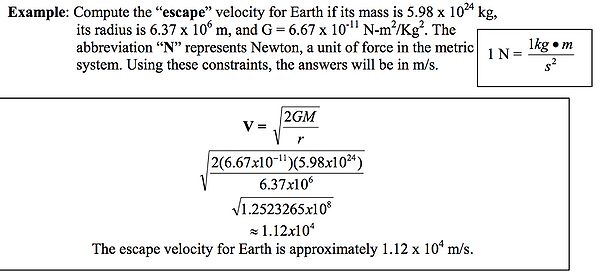Escape Velocity
created by Varun Rajagopal

Escape velocity is defined as the minimum velocity required for an object to escape the gravitational force of a large object. The sum of an object's kinetic energy and its Gravitational potential energy is equal to zero. The gravitational potential energy is negative due to the fact that kinetic energy is always positive. The velocity of the object will be be zero at infinite distance from the centre of gravity. There is no net force on an object as it escapes and zero acceleration is perceived.
The Main Idea
The formula for escape velocity at a certain distance from a body is calculated by the formula Template:Cite book
- [math]\displaystyle{ v_e = \sqrt{\frac{2GM}{r}}, }[/math]
where G is the universal gravitational constant (G = 6.67×10−11 m3 kg−1 s−2), M is the mass of the large body to be escaped, and r the distance from the center of mass of the mass M to the object.<ref group="nb"> This equation assumes there is no atmospheric friction and is an ideal scenario with sending an object on a trajectory. In fact, the escape velocity stated here should actually be called escape speed due to the fact that the quantity to be calculated is completely independent of direction. Notice that the equation does not include the mass of the object escaping a large body as escape velocity is only dependent on gravitational force. We also assume that an object is escaping from a uniform body.
A Mathematical Model
When we model escape velocity or speed, we have to assume that an object must have a velocity an infinite distance away from a large body allowing us to find the very minimum speed to escape that large body a certain distance away. "Escape velocity" is the speed needed to go from some distance away from a large body to an infinite distance, ending at infinity with a final speed of zero. This dismisses any initial acceleration. This means that a modern spacecraft for example with propellers does not follow these assumptions.
- [math]\displaystyle{ (K + U_g)_i = (K + U_g)_f \, }[/math]
Kƒ = 0 because final velocity is zero, and Ugƒ = 0 because its final distance is expressed as infinity, therefore
- [math]\displaystyle{ \frac{1}{2}mv_e^2 + \frac{-GMm}{r} = 0 + 0 }[/math]
- [math]\displaystyle{ v_e = \sqrt{\frac{2GM}{r}} }[/math]
A Computational Model
How do we visualize or predict using this topic. Consider embedding some vpython code here Teach hands-on with GlowScript
Examples

Connectedness
In space, a rocket will not actually be able to travel an infinite distance once it escapes the gravitational pull of Earth, but rather must escape the gravitational pull of the Sun, the planets in our solar system, and every other larger body. The calculation of escape velocity assumes many conditions and cannot be completely applied to real life
See also
External links
http://www.scientificamerican.com/article/bring-science-home-reaction-time/
References
This section contains the the references you used while writing this page